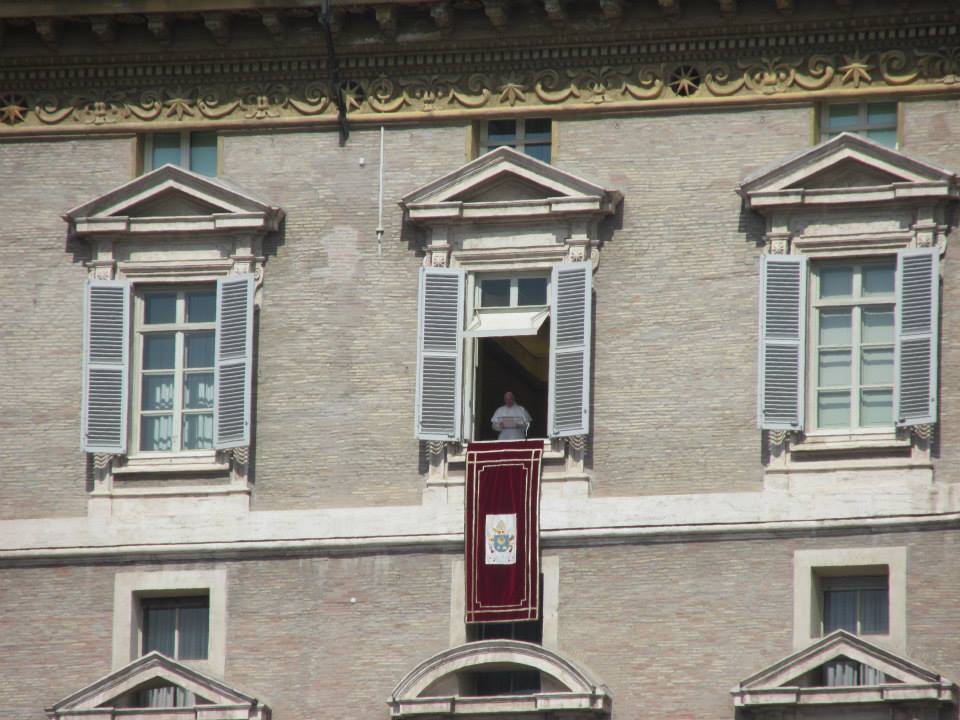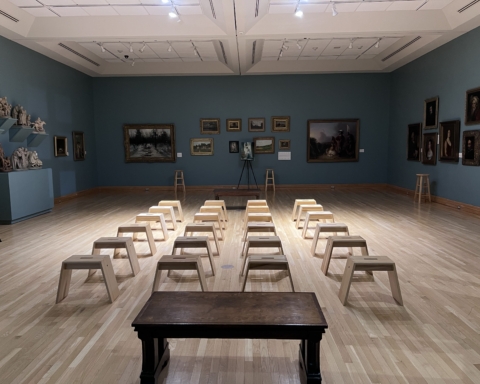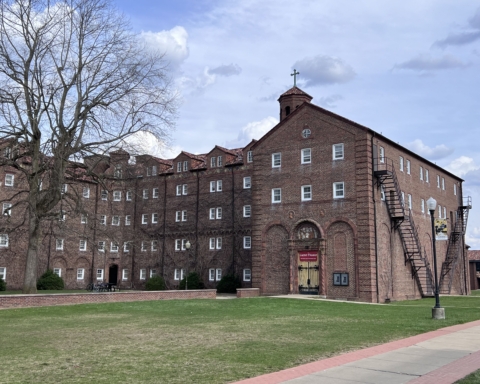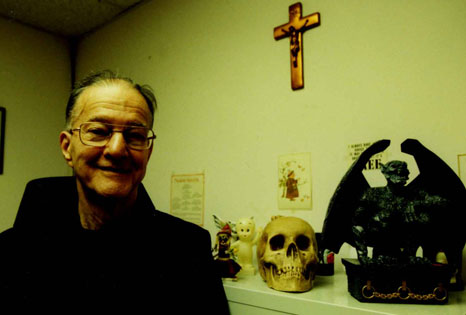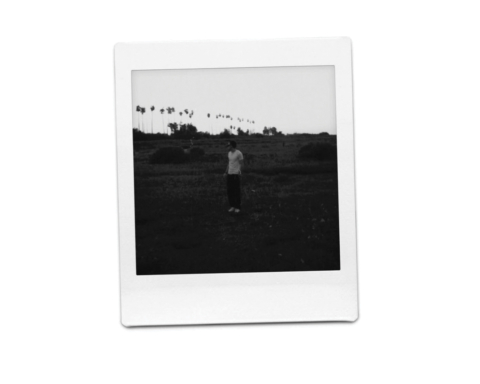By Harrison Leone
Czech Correspondent
The 11:30, or 23:30, if you prefer, bus from Prague to Munich pulled in to the outskirts of the capital of Bavaria before the sun was up and, unfortunately for me, before the trains into the heart of town were running. So I set up camp on a chilly train platform and watched the minutes tick down on the digital display telling when the next train was due to arrive. Forty-nine minutes…48…47. The dawn peeked over my left shoulder, exposing the silhouette of a dormant wind turbine.Two Asian tourists made the mistake of asking me for directions, and the more I’ve thought about it, the more I think I may have inadvertently sent them the wrong way. Such are the perils of international travel.
Munich was meant to be nothing more than a pit stop on my way to a week-long tour of Italy for my mid-semester break. Past that, I had no plan. No trains booked, no hostels reserved, not even a sense of where I wanted to go other than “south.” The only commitment I had was a bus ticket from Pisa to Florence, where I was going to meet two friends from high school, five days from the beginning of my trip. The rest of the week was a blank slate, filled with possibility and dizzying uncertainty.
As I waited at the Hauptbahnhof in Munich for the international ticket desk to open, I pulled out my comically large and unwieldy map of Italy. With the map unfolded before me across the table of a just-opened Burger King, I weighed my various options of places to go. Venice? The canals would be cool. Verona? Shakespeare seemed to think highly of it. Genoa? There might be a beach.
Eventually, I realized I was overthinking this whole process. I had to sprint through bleary-eyed Germans to make the train before it pulled out of the station, but less than three hours after getting to Munich, I was headed to Rome. I worked my way to the back of the train, found an empty cabin, and was blissfully asleep in seconds.
When I came to somewhere in Austria, I peered over the window and saw the ground covered in thick, wet snow. Sheer rock faces rose up around the small Tyrolean town my train had stopped at. I was in the Alps. I spent the rest of the ride with my nose pressed against the glass, staring slack-jawed at some of the world’s most photogenic mountains.
I got into Roma Termini, the main train station in Rome, at around 5 p.m. From the mouth of the station, I saw a golden statue on the top of a church peering down at me and was instantly and foolishly compelled to wander through the streets. I descended into the steamy, chaotic and hellishly dark Roman subway system, squeezed my way onto a criminally overcrowded train car and rode to the Spanish Steps. From there, I was treated to a sunset over the Eternal City, with the low spring twilight streaming over St. Peter’s Basilica.
As wonderful as this sight was, it left me in the dark, alone in the middle of a foreign city of more than three million people with nowhere to stay. I figured it would be easy to find a cheap backpacker’s hostel somewhere within walking distance. It took me more than two hours and a mile of walking to realize that finding a bed for the night would not be as simple as I’d hoped. I accepted that I was not in a part of town friendly to travelers on a budget, so I resigned myself to fork over more Euros than I may have wanted at a traditional hotel. I found a place for 40 Euros-or about twice the amount I had expected to spend. Granted, it had a balcony, a view of the Vatican and a shower that didn’t require me to wear sandals. To atone for my unexpected splurge, I ate a dinner of bread, with bread for dessert.
I felt refreshed the next day, energized by my comfy accommodations, and decided to head down the block to the walls of Vatican City. I strolled around the outside of the world’s smallest sovereign state and eventually came upon a sea of people standing in St. Peter’s Square. At first I thought this was the line to get into the Basilica, but it was soon clear that this was a static crowd, waiting around for something apparently significant to happen. Having nothing better to do, I decided to take a seat on the hot cobblestone and wait with them.
Less than five minutes after I arrived, a second story window in one of the Vatican buildings was opened and a black banner was hung out. Five minutes later, Pope Francis appeared in the window to meet thunderous applause from the admiring crowd below. I fought my way through the masses of people, bashfully excusing myself as I cut off nuns and schoolchildren until I got as close to the Bishop of Rome as I could. I snapped about a hundred pictures and listened to the service in amazement, thrilled at my luck and wondering if I was the only person to accidently see the Pope.
I continued my walk around Vatican City after Francis retired and went around the entire perimeter of the country in about 40 minutes. After that, I quickly found a room at the “Downtown Hostel” for an agreeable 19 Euros and white-knuckled my way through another ride on the Rome subways to get to the Coliseum. I arrived nearly as the ticket gate was closing, but was able to do a full tour of the ancient stadium, chipping off a few pieces of ancient concrete that I plan to use as the world’s greatest stocking stuffers.
The Coliseum was incredible, perhaps even more than expected it to be, but it was outshined by the world-class collection of ruins across the street. These ruins, known as the Roman Forum, felt like walking into a time machine and made me rediscover a childhood fascination with Ancient Rome. As an added bonus, there were cats everywhere.
The next day, I bought a train ticket to Naples for a paltry 11 Euros and headed down the coast. Naples had always been on my travel radar, as it had been the city my great-grandfather left for America more than a century ago. Within ten minutes of arriving in Naples, I could see why he wanted to get out of there.
I had read on various travel websites and in guide books that southern Italy, and Naples in particular, was “economically restructuring” and would be a place to “see the real Italy.” These were obviously thinly-veiled euphemisms for grinding poverty, but nothing could have really prepared me for my Neapolitan experience. It was like a third world country, reminding me more of pictures I’d seen of Guatemala or Honduras than of Italy. There were heaps of trash spilling into major roads, stray dogs tipping over untended trash cans, people sleeping in gutted cars and row after row of dilapidated apartment buildings. I got a hostel on the ground floor of one of these buildings and refused to leave after dark.
Not wanting to be exposed to anymore of Naples than I had to be, I decided to head down the bay and find a way up Mt. Vesuvius. I took the hopelessly decrepit Naples subway to the base of the volcano and found a van to the rim of the mountain’s crater. I was treated to sweeping views of the sordid city and crystal blue Mediterranean below as I went up the side of Vesuvius. Unfortunately, the top of the mountain was shrouded in thick gray clouds, but it was a bit of a thrill to see puffs of geothermic steam escape from cracks in the pumice that ringed the crater.
I descended the mountain and wanted to stay outside of Naples for as long as I could, so I trekked down into the ruins of the ancient resort town of Herculaneum. This once-posh city of first century Rome was destroyed in the same eruption that annihilated Pompeii. Herculaneum often gets passed up on tourist itineraries for its much more famous sister city, which meant for me that it had all the attraction of Pompeii with about half the crowds.
None of the site staff at Herculaneum was at all concerned if tourists sat on benches, climbed through windows or touched the frescos throughout the town. This allowed for a much more intimate and hands-on experience with the ruins. Had you tried to do any of this at the Roman Forum, you would have earned a lifetime ban, or been made to wash all of Silvio Berlusconi’s cars. Herculaneum, like the rest of Southern Italy, approached life with a laissez-faire attitude.
The next day, it was time to leave and head to Pisa, but not before getting clipped by a Vespa in what must have been the most low-impact traffic collision ever. It has been said that people who don’t like Naples are afraid of something. Well, I liked Naples for all its grime, grit and gall, but it also scared me to death.
Pisa offered a welcome change of pace from the squalor of the south. It was a quiet university town in the foothills of the soft, green mountains of Tuscany. The Arno River cuts through the city center, meandering around several pleasant parks integrated with Renaissance era fortifications. The city was small enough to be covered on foot in less than an hour, which I had to do, having bought a hostel as far from the Leaning Tower as possible.
Originally, I came to Pisa as a gateway to Florence, a cheaper option than flying out of one of Italy’s most visited cities. I had expected to see the Tower, have some gelato, and bide my time until moving on. Unexpectedly, Pisa became my favorite of the Italian cities I passed through. Per square mile, it was the most beautiful. It was calm, serene and tourist-friendly.
The Tower, decorated with alternating bands of black and white marble, was undoubtedly beautiful. Unprepared for the trip as I was, I had no idea the Tower was just one part of an amazing complex of 12th and 13th century buildings known as the Plaza of Miracles. The Tower, Cathedral, Baptistery and cemetery were all unparalleled examples of Renaissance architecture surrounded by an immaculate sea of verdant grass.
The Plaza of Miracles, and especially the Cathedral, rank near the top of the list for most visually impressive things I’ve seen in Europe. After taking it all in, and marveling that they had a whole building dedicated to dunking infants in water, I made my way to Galileo Galilei Airport to meet my high school friend and we bussed to Florence.
The birthplace of the greatest cultural movement of the past thousand years, Florence has lost none of its medieval glory. The main cathedral, the Duomo, dominates the cityscape; from anywhere in the town, its massive dome can be seen. My friends and I, feeling adventurous, climbed to the top of the cathedral to get the best view of the city possible. Five-hundred steps and a lot of sweating and swearing later, we conquered the endless winding staircase and were treated to a majestic view of the heart of Tuscany.
The wealth and opulence of Florence were immediately obvious, particularly along the famous Ponte Vecchio. The Vecchio was once a medieval trading bridge at the crossroads of the city that is now exclusively jewelry and Rolex boutiques.
While in Florence, I asked what the Italians liked to drink besides wine, which apparently is like asking what people liked to breathe besides air. In every store, at every restaurant, even in some of the gelaterias, some of the finest bottles of red and white vino in the world could be found. When it was time for my flight back to Prague, it amazed me that everyone in Italy wasn’t a full-blown alcoholic.
Coming back to the Czech Republic meant I was free from the sultry Italian sun, the putter of scooters and the excessive gesticulations of an entire nation. I had seen the Pope, been hit by a Vespa, drank enough pinot grigo to make Dionysus blush and ate my weight in pasta. I have always been Italian by heritage, and for one wild, wine-soaked week, I got to be Italian by practice.
leonehj11@bonaventure.edu

